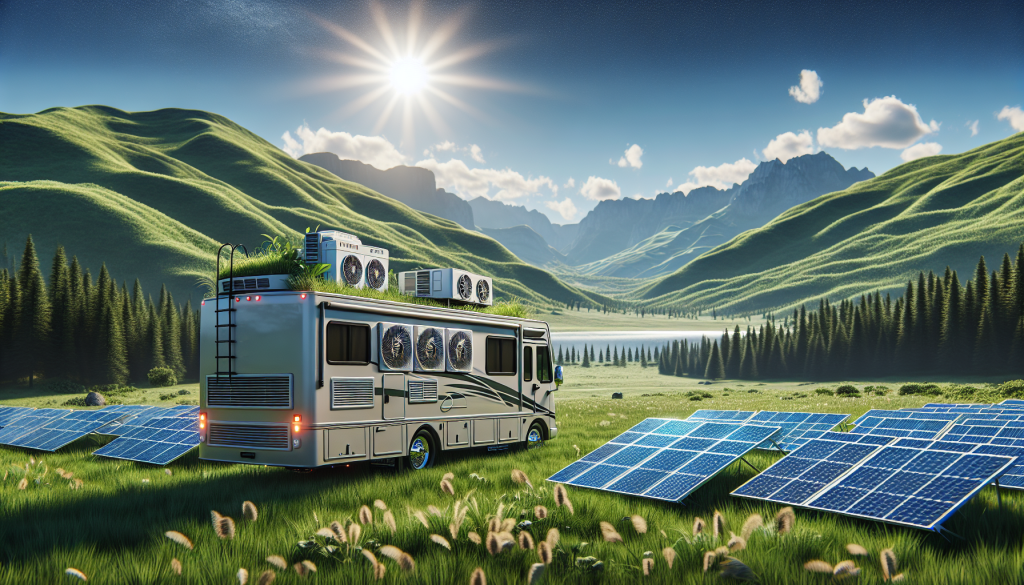
Embracing the power of the sun to energize our lives is no longer a distant dream; it’s an attainable reality, especially for the modern nomad seeking comfort while exploring the great outdoors. For recreational vehicle (RV) enthusiasts, the allure of solar energy is compelling. It offers a sustainable way to power appliances, including the essential air conditioner (AC) unit. But one might wonder, how much solar to run RV AC? The answer is not as straightforward as it seems and depends on a chorus of factors including, but not fairly limited to, the AC unit’s wattage, the duration of its use, and the efficiency of your solar setup.
Let’s dive into the anatomy of an RV’s solar-powered AC system. The first consideration is the AC unit’s power consumption, measured in watts. An average RV AC unit needs about 13,000 to 15,000 British Thermal Units (BTUs), roughly translating to a power requirement of around 1,500 watts when running. However, the initial startup demand can be significantly higher, potentially three times the running wattage. With this in mind, to run an RV air conditioner for about 8 hours per day, one might require upwards of 1,800 watts of solar panels under ideal sunlight conditions.
But it’s not just about the panels. The solar setup also necessitates a corresponding battery capacity to store the harnessed sun juice. How do we figure out this requirement? Calculations suggest that you would need a battery bank sizeable enough to hold this power. Taking into account inefficiencies and non-ideal conditions, a safe estimate could be a 400-600 Amp-hours (Ah) battery capacity at 12 volts to run the AC comfortably without depleting the battery too swiftly.
Furthermore, one must consider the solar charge controller, a critical component that controls the rate at which battery banks are charged by solar panels. A maximum power point tracking (MPPT) controller is particularly efficient for this task. And lastly, an inverter, which converts stored DC power into AC power, is essential to run conventional RV air conditioners. Since we are discussing substantial wattage, a pure sine wave inverter of at least 2,000 watts is advisable to handle the AC’s power demands smoothly, including the surge at startup.
This intricate dance of watts, batteries, and solar panels leads us to a recurring question on the topic: how much solar to run RVAA!C? We’ve gathered that an RV with a standard-sized air conditioner unit would require a solar array of approximately 1,800 watts, paired with a robust battery bank and a suitable inverter.
The thick plot of the matter is the sun itself. Solar power availability changes with weather, season, and geography. Therefore, there is a need to over-provision solar capacity to compensate for non-peak sunlight hours and ensure the batteries can recharge effectively under less than ideal solar conditions. In fact, some seasoned solar RVers recommend a set-up of around 7 kilowatts of solar panels if one chooses to run the AC exclusively on solar, allowing for operation during peak sunlight hours without depleting the battery reserve.
The investment for such a solar setup can be significant, but costs are consistently declining as technology evolves. Moreover, this cost must be juxtaposed with the freedom it affords; to wanderlust in comfort, unchained from the grip of grid dependence, and to embrace energy self-sufficiency.
Diligent planning and expert advice are paramount to execute such a solar project successfully. Begin with an RV energy audit, determining all power needs, and calculating the solar panel requirements and corresponding battery storage. Consult with specialists who can tailor your system to your specific needs, considering all variables from your RV’s roof space to your travel itinerary.
Conclusively, choosing to power your RV AC with solar energy is more than just a mere upgrade; it’s a commendable step towards sustainable living on the move. A well-designed solar setup will not only give you the comfort of a climate-controlled interior but will also cushion your ecological footprint. So, here’s to bright days ahead, both literally and figuratively, as you journey with the sun as your boundless power source.